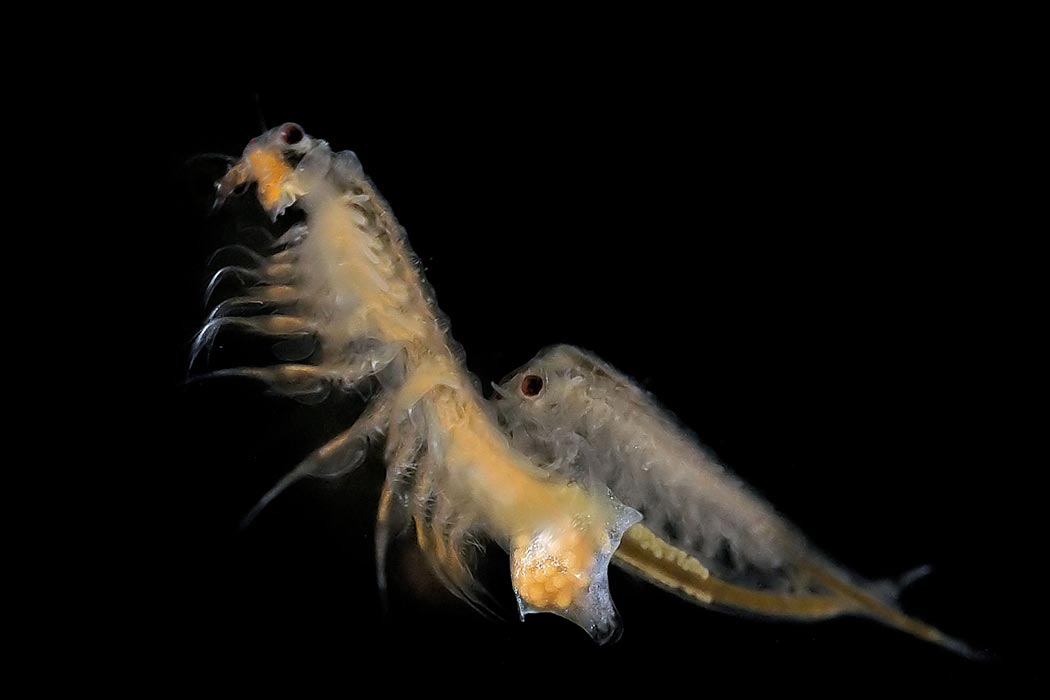Turns out ocean currents might be created by…sea monkeys?
Seriously.
Sea monkeys, AKA brine shrimp, are representative of marine organisms that migrate vertically, rising to shallow water at night and returning to deep water during the day. The movement of all of these little tails and feet might create up to a trillion watts of kinetic energy, enough to influence the circulation of the ocean. These results were derived under experimental conditions but if they hold up oceanographers might need to reconsider their models for how the ocean circulates. If these tiny creatures can influence currents, you have to wonder what else they can do.
Daily vertical migration is a strategy for improving feeding opportunity while avoiding predation. Diving deep during the day, small organisms avoid dangerous diurnal hunters that prowl shallow water while still gaining access to the greater food resources of the surface layer. It’s a long, tiring trip, but worth it since feeding in shallower water provides access to photosynthesis and the nutrition it produces — virtually unobtainable in the depths where it is always dark. Migrating organisms bring carbon back down deep with them from the surface, providing food for an area where it would otherwise be very scarce.
Some carbon is carried directly down in the form of the organisms’ bodies, where they can be eaten by deep-sea predators. However, most of it comes in the form of feces, which in the case of many small aquatic organisms, are very carbon and nutrient-rich. The feces of these critters have characteristics that promote rapid sinking, ensuring that a good amount of fecal material really does make it all the way down into the darker layers. In other cases, migrating organisms do not release feces until they have already migrated down for the day, bypassing the uncertainty of sinking and distributing the rich nutrient source straight into deep water. Some of these nutrients are then transported horizontally in currents, where they are distributed throughout the ocean. Others might even rise back up to shallow water in upwelling zones.
Nor are nutrients the only thing transported by migrating sea monkeys. It turns out that bacteria ride along as well. The daily movement gives bacteria, including pathogens, a way past density and temperature barriers that would otherwise block them and allows entry into new strata of the ocean and new populations to mingle with. Just like the nutrients in feces, some of these bacteria are caught by currents and carried horizontally into new geographic areas, so micro communities are strongly influenced by vertical migration as well.
If the experimental results are confirmed in the field, then the sea monkeys and other vertical migrants are even more crucial than anyone realized. They not only provide nutrients for distribution, but simultaneously provide the means of that distribution throughout the ocean. Sea monkeys are therefore the root of both major physical and major biological processes, and few if any other organisms on Earth can claim that distinction. As the authors of the current research conclude, biological and physical processes can be interchangeable and researchers should consider both together more often than they do. Never judge a package of sea monkeys by its cover.







